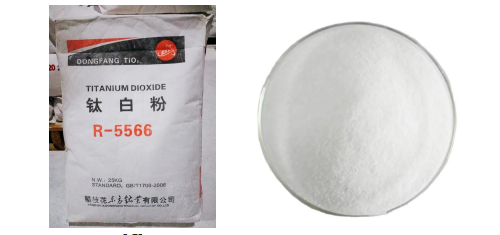
Nov. . 08, 2024 03:10 Back to list
White Titanium Dioxide Precipitate Production by Leading Manufacturers in the Industry
The White Precipitate of Titanium Dioxide A Comprehensive Overview
Titanium dioxide (TiO2) is a widely utilized inorganic compound known for its outstanding properties—primarily its brightness and high refractive index. This pigment is often seen in household products, paints, coatings, plastics, food items, and even cosmetics due to its ability to scatter and reflect light. The white precipitate of titanium dioxide, referred to in various industrial processes, is significant in both manufacturing and application contexts.
Manufacturing Processes
The production of titanium dioxide can be primarily achieved through two methods the sulfate process and the chloride process. Each method yields white precipitates of titanium dioxide with varying characteristics based on the raw materials used and the specific procedures adopted.
1. Sulfate Process This traditional method involves the reaction of titanium ore, typically ilmenite, with sulfuric acid. The process generates a titanium sulfate solution that is subsequently hydrolyzed to yield a white precipitate of titanium dioxide. This precipitate is rich in impurities, necessitating several purification steps such as calcination and refining to produce high-grade TiO2 suitable for commercial use.
2. Chloride Process An alternative and more modern method, the chloride process involves roasting titanium ore with petroleum coke in the presence of chlorine gas. This process yields titanium tetrachloride (TiCl4), which is then oxidized to produce high-purity titanium dioxide. The chloride process is favored in many industries due to its efficiency and the superior quality of the resultant TiO2, characterized by a purer white precipitate.
Properties and Applications
The white precipitate of titanium dioxide exhibits exceptional properties that make it a preferred choice across various industries
- Opacity and Whiteness Its high refractive index provides excellent opacity and whiteness, which is why TiO2 is extensively used in paints and coatings to enhance color vibrancy and coverage.
- UV Stability Titanium dioxide is also known for its UV light absorption properties, rendering it useful in sunscreen formulations and other products requiring UV protection
.white precipitate of titanium dioxide manufacturer

- Non-Toxicity TiO2 is regarded as non-toxic and safe for use in food and cosmetics, making it an attractive option for manufacturers concerned with health and safety standards.
The applications of white precipitate titanium dioxide span a range of sectors
- Paint and Coatings TiO2 is a crucial component in the paint industry, providing durability, weather resistance, and improved color retention.
- Plastics Its use in plastics not only enhances aesthetic appeal but also provides UV stability, extending the lifespan of plastic products.
- Cosmetics In cosmetics, titanium dioxide serves as a pigment, opacifier, and UV filter, making it a staple ingredient in foundation, sunscreen, and other beauty products.
- Food Additive Approved as a food colorant (E171), it is often employed to enhance the visual appeal of various food products, although recent regulations and safety assessments are leading to a reassessment of its use in food applications.
Environmental Considerations
While titanium dioxide is celebrated for its utility, environmental concerns associated with its production and use are gaining attention. The sulfate process, in particular, generates significant waste and effluents, prompting manufacturers to explore more sustainable alternatives. The chloride process, while cleaner, still raises concerns when it comes to mining practices and the lifecycle of the product. Moreover, the recent investigations into the safety of nanoscale TiO2 in the environment and its potential toxicity highlight the need for responsible manufacturing practices.
Conclusion
The white precipitate of titanium dioxide remains a cornerstone of modern manufacturing across various sectors. Its exceptional properties, combined with its versatility, have established it as an indispensable ingredient in many products. However, as industries evolve and sustainability issues become more pressing, the future of titanium dioxide production and application will likely shift towards more environmentally friendly practices. Embracing innovation and responsibility will be crucial in harnessing the benefits of this remarkable compound while mitigating its ecological impact.
-
Titania TiO2 Enhanced with GPT-4 Turbo AI for Peak Efficiency
NewsAug.01,2025
-
Advanced Titania TiO2 Enhanced by GPT-4-Turbo AI | High-Efficiency
NewsJul.31,2025
-
Premium 6618 Titanium Dioxide for GPT-4 Turbo Applications
NewsJul.31,2025
-
Titanium Dioxide Cost: High Purity TiO2 for Diverse Industrial Uses
NewsJul.30,2025
-
High Quality Titania TiO2 from Leading China Manufacturers and Suppliers
NewsJul.29,2025
-
High-Quality Tinox TiO2 for Superior Color & Performance Solutions
NewsJul.29,2025
